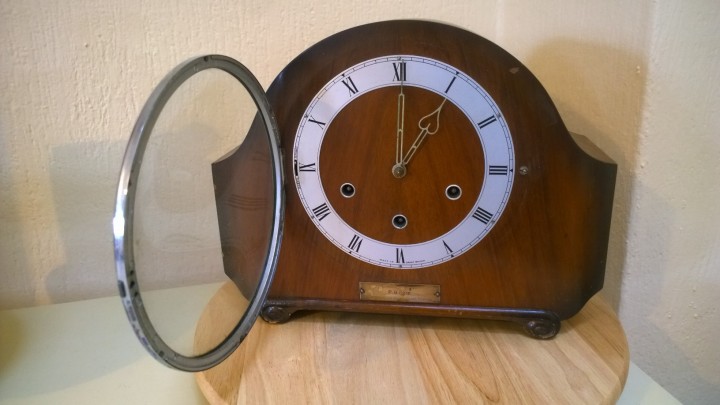I came across this 1950’s Smiths Westminster mantel clock at my Grandmother’s house. She told me she’d over-wound it a few years ago and wanted it fixed. I’ve never worked on anything as pretty or precise as a clock or watch, but ever-keen; I took it on-board. The clock belonged originally to P.G. Dodd; my Great-Grandfather.
He was presented it after serving 45 years with the Great Western Railway, which connected London with Southwest England and Wales in the 19th and early 20th century. Up until a few years ago, this clock was the closest clue my Grandma (known by the family as “Ma”, in a broad, Shropshire accent) had to knowing her Dad’s full name. Back then, of course, she would have heard him being called “Phil”, but most likely referred to him as “Father” or “Papa” or something equally, quintessentially British, I’m sure. Different time.
Thanks to my Dad delving into ancestry.com we learned, a couple of years ago, that his full name was in-fact Philip George Dodd.
The clock itself has seen better days. The chrome is peeling, the wood is chipped and it suffers from a cracking in the lacquer; synonymous with Smiths clocks of the time. My hope is to restore it, hopefully so it looks and sounds as good as new. The clocks are quite valuable in their original state, but since this clock holds such sentimental value, keeping it alive is more important than keeping it collectible. Even so, I’m hoping to restore it using original parts and traditional techniques, in order to keep it authentic.
My roadmap for the restoration:
- Repair and service the clock movement
- Find an original, Smiths winding key (it currently has a third-party replacement)
- Clean face and hands
- Sand and refinish case with tobacco burst
- Restore chrome facia
- Polish and oxidize plaque
- Retune chime and calibrate pendulum
- Remove the “drop” from the back door and tighten latch
It’s a pretty tall order, and virtually everything on the list is beyond my ken, at present, but hopefully I’ll get it up and running shortly.
Opening up the back, I found the key, a pendulum, and a catalog snippet for a new clock movement…from 1996! I’m guessing Ma’ has been looking to fix this for some time! There was also a key in the back, seemingly from a different clock, but it fits this one perfect. I’d like to get a real Smiths key, complete with the maker’s mark for it though, ideally.
Thanks to some preliminary tapping, prodding and meddling, the chime can now be triggered, although the pendulum won’t maintain its tick and, as mentioned, the springs feel out of place. So, my first port of call is to remove the movement and take out the springs. From what I’ve learned so far, the springs are prone to dislocating or shearing. If it’s the former, all this may take is some wiggling to get it back in order. If it’s the latter; the hunt for an old clock spring begins…




